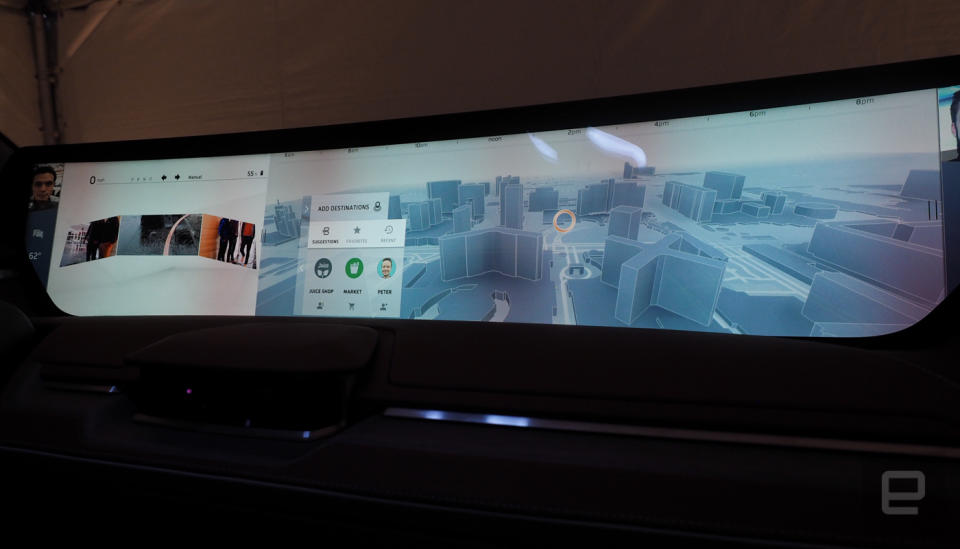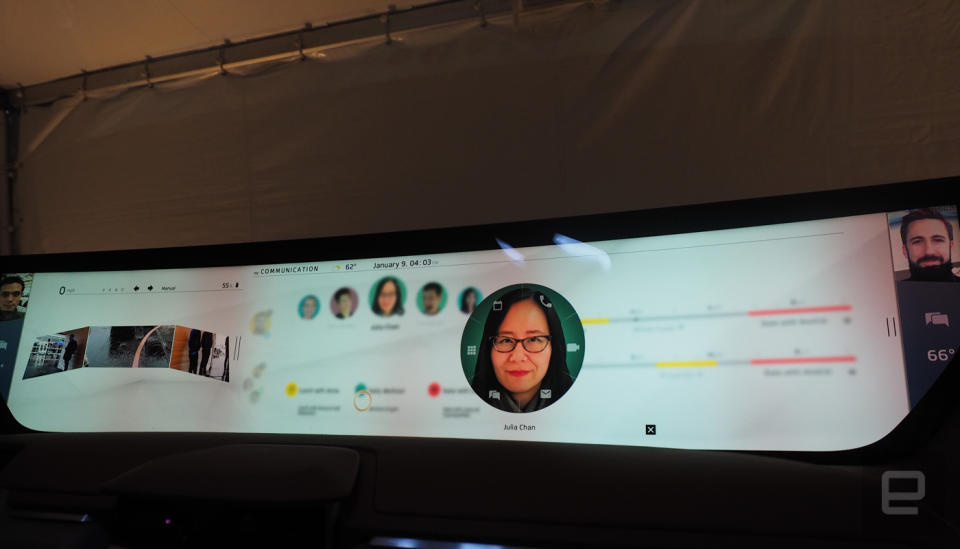Inside Byton’s experience-driven SUV concept
Check out that giant display.
It's difficult to spin up a car company basically out of thin air. Byton not only is trying to accomplish that but also going against more than 100 years of automotive history by highlighting the car's interior over the horsepower and handling. Yes, other luxury automakers also tout the poshness of their interiors, but Byton has decided to go even further: It hopes to lure customers with an SUV it refers to as a smart device. You know, like your phone.
The centerpiece of this plan is the massive 49-inch Shared Experience Display (SED for short). Nothing else the Byton Concept offers either inside or out demands your attention like that giant screen. It's the center of the company's entire business plan to create a "smart intuitive vehicle." Naturally, I wanted to see if it's worth the hype.
Initially, the demo of the car also involved actually being driven around in it. Journalists typically are not trusted behind the wheel of a multi-million-dollar prototype vehicle, and in this case it's all about the passenger experience anyway, so it made sense. Then the skies opened up and dropped rain on typically dry Las Vegas; Byton was not keen to trust its concept car on wet roads during a downpour. So with the car nestled in a tent, I sat down to get to know it better, all while sitting still.
In real life, the screen feels larger than photos of it let on. It's all-encompassing and difficult to ignore. Actually, you can't ignore it. The demo of the system involved only gesture controls, which worked about 70 percent of the time, as would be expected with a prototype. At launch, it will also include input by touch via the steering-wheel-based tablet and voice commands. In fact, those last two control interfaces are how the average person will use the system while driving.
Even though the SUV is meant for an autonomous world, at launch in China in 2019, the driver will still have to pay attention at least most of the time; this will hold true until 2021, when the SUV is updated to Level 4 autonomy. Plus, gesture controls are notoriously fickle. Add the bumps of a pothole-filled road and now your hand is all over the place in the space in front of the camera.
Plus, using the system requires your eyes to leave the road for far too long while you're driving. With your voice and the touchscreen, that's less of an issue.

The UI itself is clearly focused on the car driving itself. Access to videos, onscreen segments that can be enlarged or shrunk by the driver, and of course the health information it shares can be a huge distraction. All that is great when you're relaxing instead of tackling traffic. Even though the car is expected to ship with Level 3 autonomy at launch, the driver will probably still be spending a lot of time driving while behind the wheel.
That creates a sort of weird growing pain for Byton when it launches its electric SUV. It wants to compete with the smartphone in the car. The infotainment system is meant to be an experience to keep you occupied while the self-driving car navigates the city for you. Judging by my brief demo, it looks like it will deliver on that goal. But at launch, the system might have to be toned down to appease regulators concerned about safety. It'll be interesting to see how new customers feel about that if the system is squelched when they buy their new Byton.
Click here to catch up on the latest news from CES 2018.




